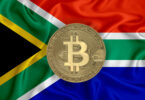Today the Hong Kong Monetary Authority unveiled its stablecoin sandbox. This follows the December release of proposed regulations and a consultation that ran until February. Based on that, the stablecoin currencies are likely not restricted to Hong Kong dollars, with no mention of specific currencies made in the HKMA announcement.
“The sandbox arrangement serves as an effective channel for the HKMA and the industry to exchange views on the proposed regulatory regime, and will facilitate the formulation of fit-for-purpose and risk-based regulatory requirements, which is key to promoting the sustainable and responsible development of the stablecoin issuance business,” said Mr Eddie Yue, CEO of the HKMA.
Notably, the stablecoin sandbox sits on its website within the International Financial Centre.
There aren’t a huge number of requirements in the sandbox documentation. The primary ones are that the applicant should demonstrate:
- genuine interest in and a reasonable plan on issuing fiat-referenced stablecoins in Hong Kong
- a concrete plan on participating in the sandbox
- a reasonable prospect of complying with the proposed regulatory requirements.
One of the proposed regulations was that the issuer must be based in Hong Kong and have a capital of at least HK$ 25 million ($3.2m) or 2% of the stablecoin issuance, whichever is higher.
An area where the HKMA is sensitive is public announcements by sandbox participants. Presumably they’re keen on sandbox participants who are not claiming endorsement or kudos from the HKMA. Hence, any public announcements must be vetted.
In late January, Bloomberg reported that Harvest Global Investment, an asset manager with more than $200 billion in AUM, was discussing entering the sandbox with the HKMA alongside RD Technologies and Venture Smart Financial Holdings.
Hong Kong crypto and tokenization activity
Since the island embraced digital assets last year, it has moved at speed. It has opened applications for retail cryptocurrency exchange providers, although it has yet to announce any new ones beyond the original two (OSL, HashKey) that were authorized for institutional investors. It also updated crypto rules for retail investors, blocking access to foreign ETFs.
On the tokenization front, the government issued the world’s largest native digital bond to date, a green bond of more than $750 million. It has provided some guidance to banks on tokenization with plans for legislation. Plus HKMA recently launched a wholesale CBDC initiative that will support tokenization and tokenized deposits.






